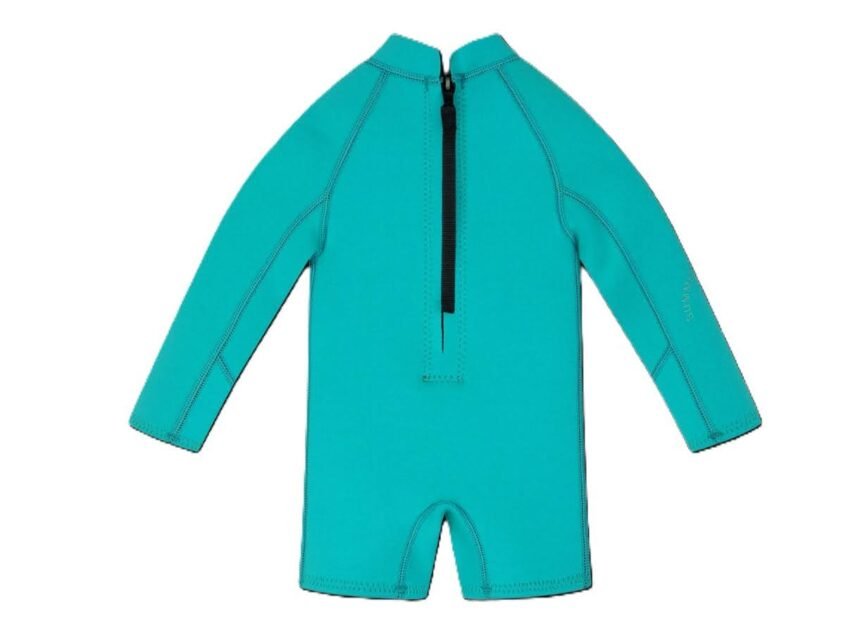Finding the perfect boys wetsuit can be a challenge, given the various options available in the market. Parents and guardians must consider numerous factors to ensure their children enjoy safe and comfortable water activities. Whether it is for swimming lessons, surfing, or any other aquatic sport, selecting the right wetsuit is essential for both performance and protection.
Understanding Wetsuit Materials
The type of material used in a wetsuit significantly impacts its function and effectiveness. Most wetsuits are made from neoprene, a synthetic rubber that provides excellent insulation due to its composition. This material traps a thin layer of water between the suit and the skin, which warms up with body heat, thereby insulating the body. It is crucial to check the thickness of the neoprene, as it influences the suit’s warmth and flexibility.
Determining the Correct Wetsuit Thickness
Wetsuit thickness is measured in millimetres and is generally presented in two numbers, such as 3/2mm. This notation indicates the thickness of the neoprene in different parts of the suit: the first number represents the thickness around the torso, while the second number indicates the thickness on the extremities. Thicker wetsuits provide better insulation, which is beneficial in colder waters, but may restrict movement. Conversely, thinner wetsuits are more flexible but offer less warmth.
Choosing the Right Fit
The fit of a wetsuit is another critical factor to consider. An ill-fitting wetsuit can cause discomfort and reduce its effectiveness. It is vital that the wetsuit fits snugly without being too tight, as this can constrict movement and breathing. Conversely, a suit that is too loose will allow excess water to flow in and out, decreasing its insulating properties. Many brands offer a size guide to assist in selecting the correct size for boys, ensuring both comfort and performance.
Considering the Type of Entry
The way one gets into a wetsuit can also affect both its performance and the ease of use. There are primarily three types of wetsuit entries: back zip, chest zip, and zipper-less entry. Back zips are the most traditional and are generally easier for young boys to manage independently. Chest zips offer better water resistance but can be more difficult to put on. Zipper-less wetsuits provide maximum insulation and flexibility but are usually the most challenging to don and doff.
Wetsuit Styles and Designs
Aside from functionality, the style and design of a wetsuit can be important, especially for children who want to express their personalities. Wetsuits come in a variety of colours and patterns. However, while choosing a stylish suit, it is important not to compromise on quality and performance. Many brands balance aesthetics with function, offering both colourful designs and high-performance fabrics.
Exploring Additional Features
Some wetsuits come with additional features that may enhance their performance or comfort. Features such as reinforced knees can provide extra durability, especially for activities like surfing where wear and tear are concerns. UV protection is another beneficial feature, shielding young skin from harmful sun exposure, which is particularly important during sunny beach days.
Cost Considerations
Price is often a critical factor when purchasing a wetsuit. While it is important to find a suit within budget, it is equally important to not sacrifice quality. Investing in a high-quality wetsuit often pays off in the long run, as it will last longer and perform better. Parents should assess the frequency and type of water activities to determine how much they should invest in a wetsuit.
Maintenance and Care for Longevity
To ensure the longevity of a wetsuit, proper care is essential. Rinsing the suit in fresh water after each use removes salt, chlorine, and sand, which can degrade the neoprene over time. Additionally, hanging the wetsuit to dry in the shade prevents sun damage. Proper storage, by laying it flat in a cool, dry place, will keep the material in good condition.
Environmental Considerations
Many brands are moving towards more sustainable practices in the creation of wetsuits. Eco-friendly wetsuits made from materials like limestone-based neoprene or natural rubber are excellent options for environmentally-conscious consumers. These alternatives often have similar, if not superior, performance compared to traditional neoprene and are helping to reduce the ecological footprint of outdoor recreational gear.
Conclusion
Ultimately, choosing the right boys wetsuit involves balancing performance, comfort, and style with the intended use and environmental considerations. By paying attention to materials, thickness, fit, and additional features, parents can ensure their children have a positive and safe experience in the water. Understanding these factors will help make an informed decision when buying a wetsuit for a boy, making the investment worthwhile both in terms of enjoyment and cost.







